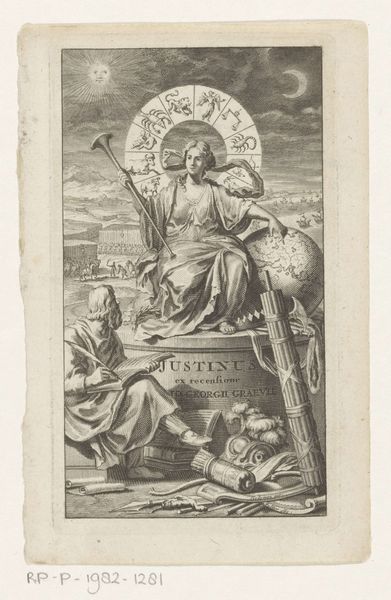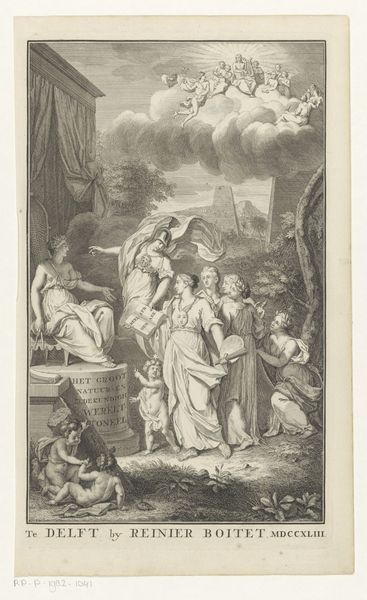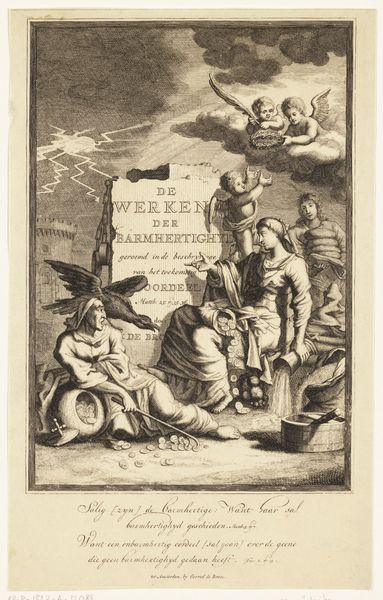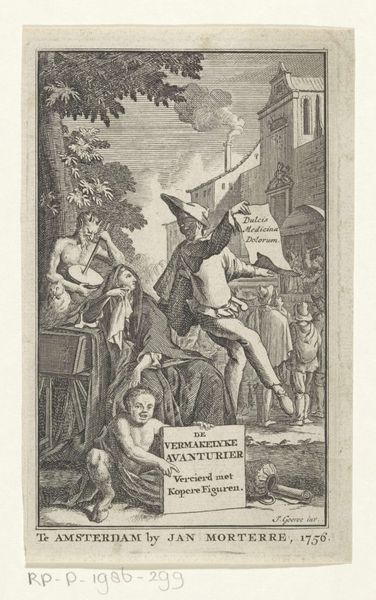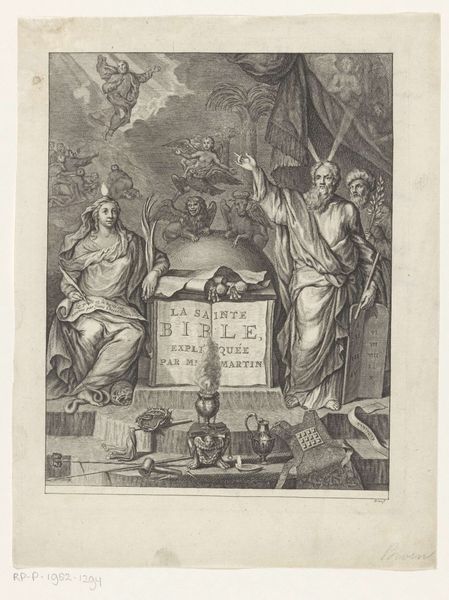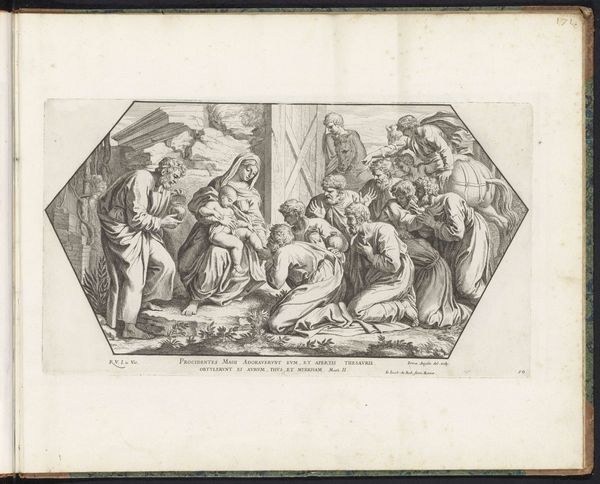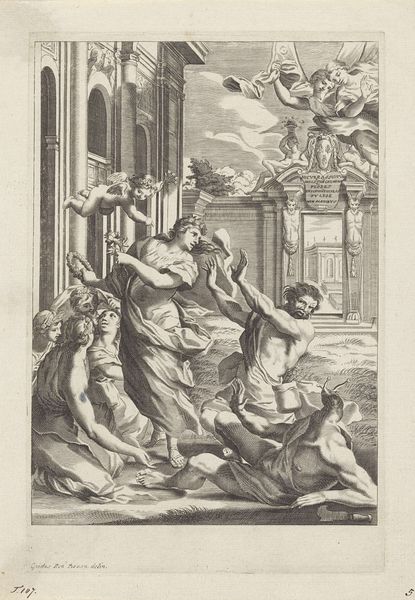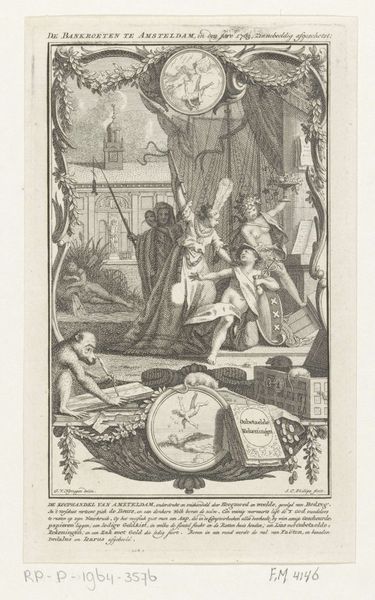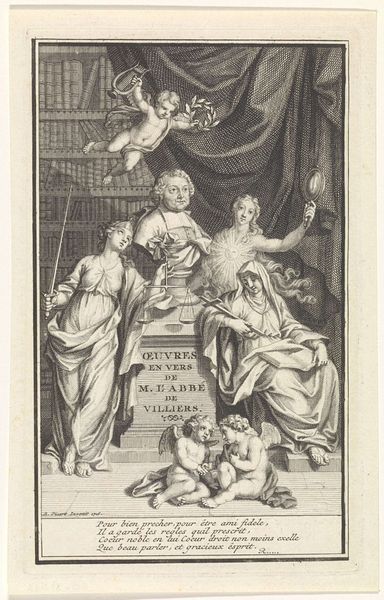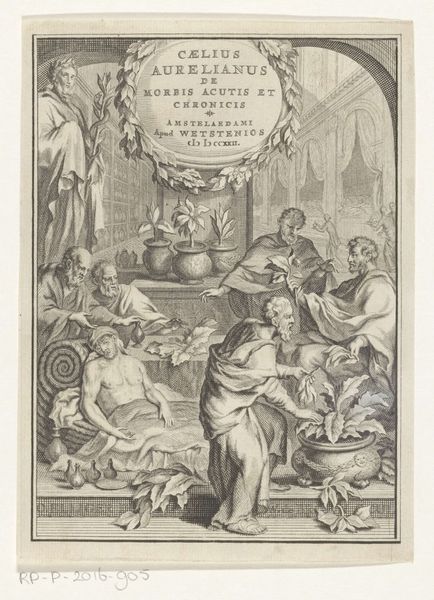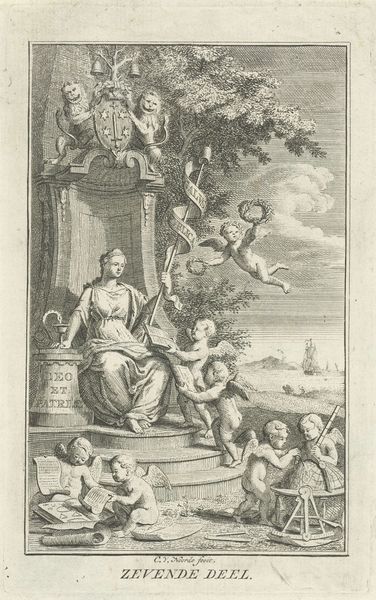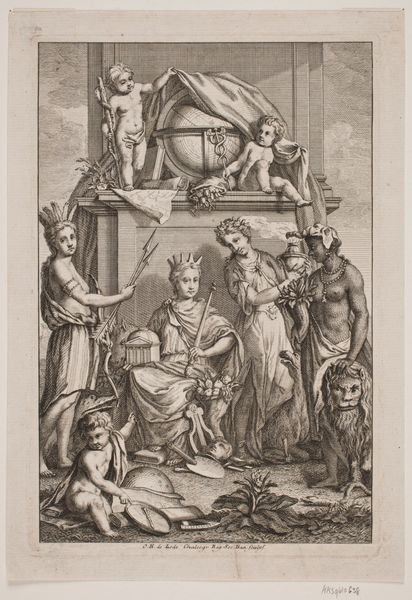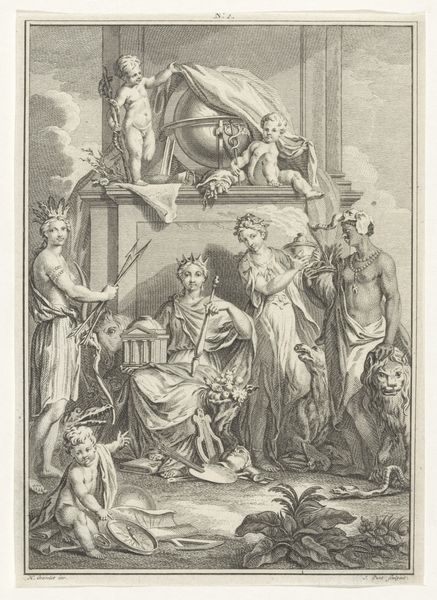
print, engraving
#
allegory
#
baroque
# print
#
old engraving style
#
figuration
#
line
#
history-painting
#
engraving
Dimensions: height 186 mm, width 116 mm
Copyright: Rijks Museum: Open Domain
Curator: Let’s discuss this intriguing engraving: Jan Punt’s “Allegorie op het schrijven van geschiedenis,” created in 1749. Editor: It immediately strikes me as incredibly detailed. Look at the density of lines; you can almost feel the texture of the paper. There's a definite emphasis on the material, the printed object itself. Curator: Absolutely, and it's fascinating to unpack what's being presented here. We see an allegorical scene, but more than that, it's a staged representation of power. History being written is, of course, never neutral. Editor: Exactly. The tools surrounding the figures - books, quills - speak to the craft, but also to the labor and the social relations needed to write and circulate the piece. How many hands touched this print? What was the division of labor in Punt’s studio? Curator: The allegory is interesting: who are the figures portrayed and what societal position did they hold? How do their representations uphold or undermine contemporary ideas about politics? Editor: And look at that lion! A powerful symbol subdued, almost domestic. The subjugation of raw power through the act of historical documentation—is this a celebration or critique of the ruling powers? How did that interact with the consumer? Curator: Thinking about its reception, did this work primarily circulate amongst a certain class? How might different viewers interpret those symbols based on their social locations? The female personifications are also noteworthy: Who held the figurative quill and who might hold the real one? Editor: These prints served very concrete purposes; transmitting political and social ideologies in easily reproduced formats. They circulated ideas, they made them accessible, creating material networks that could reproduce social ideas through its printing. Curator: Precisely, considering the interplay between gender, power, and knowledge in Jan Punt’s print adds another layer to understanding the intricacies and inequalities of the period’s historical narratives. Editor: Investigating the material circumstances opens new perspectives on the engraving's intended purpose and broader socio-economic implications of creating a culture. Curator: It certainly enriches our reading of the past, doesn't it? Editor: It does; and by grounding ourselves in materials, methods, and historical context, we better recognize and grapple with social concepts that have shaped not only the object in view, but our present world.
Comments
No comments
Be the first to comment and join the conversation on the ultimate creative platform.
